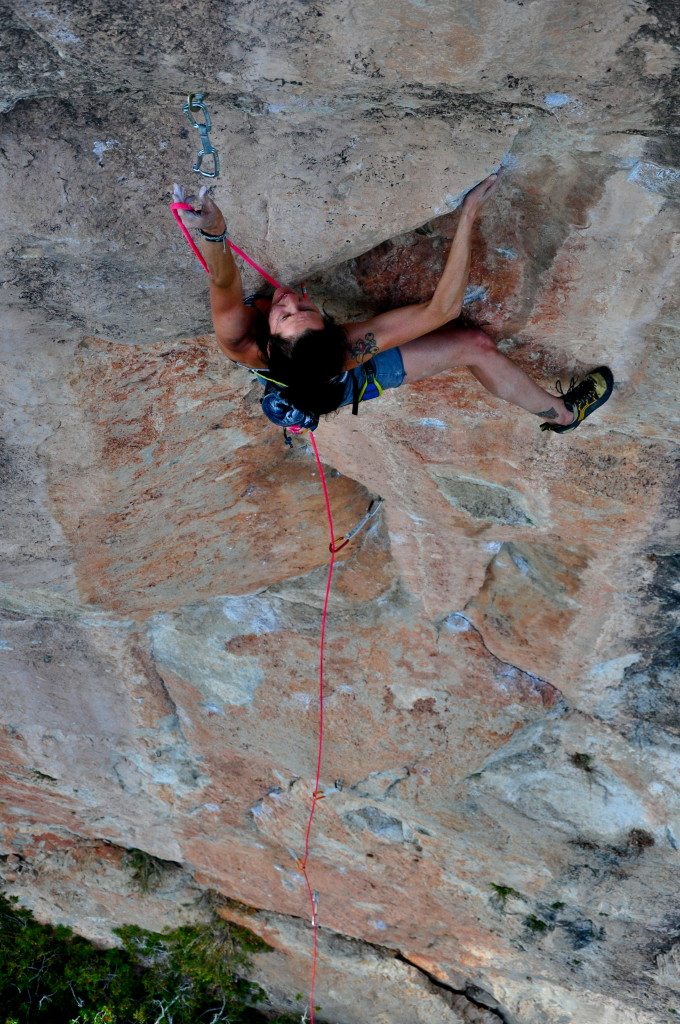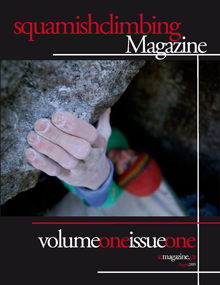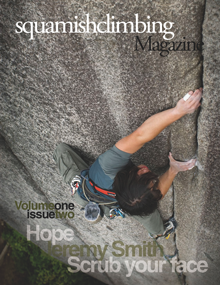If the provinces of Spain would form a family of siblings, Catalunya would be considered the “gifted” one. The landscape is varied, abundant and beautiful in every way. And we’ve all seen the videos of Sharma and Ondra shouting on their latest “mega-projects” on picturesque, streaked limestone cliffs. It’s the coolest thing in sport climbing, and rightfully so. The list of areas known and unknown in Catalunya is massive, requiring two full sized “select” guide books co-authored by the one and only Dani Andrada. Flipping through the guides is almost torturous, your first thought (no matter how much time you’ve allotted for your trip) is “I need more time”. But if you’ve managed to make it, don’t fret, Spanish life is easy, tranquilo.
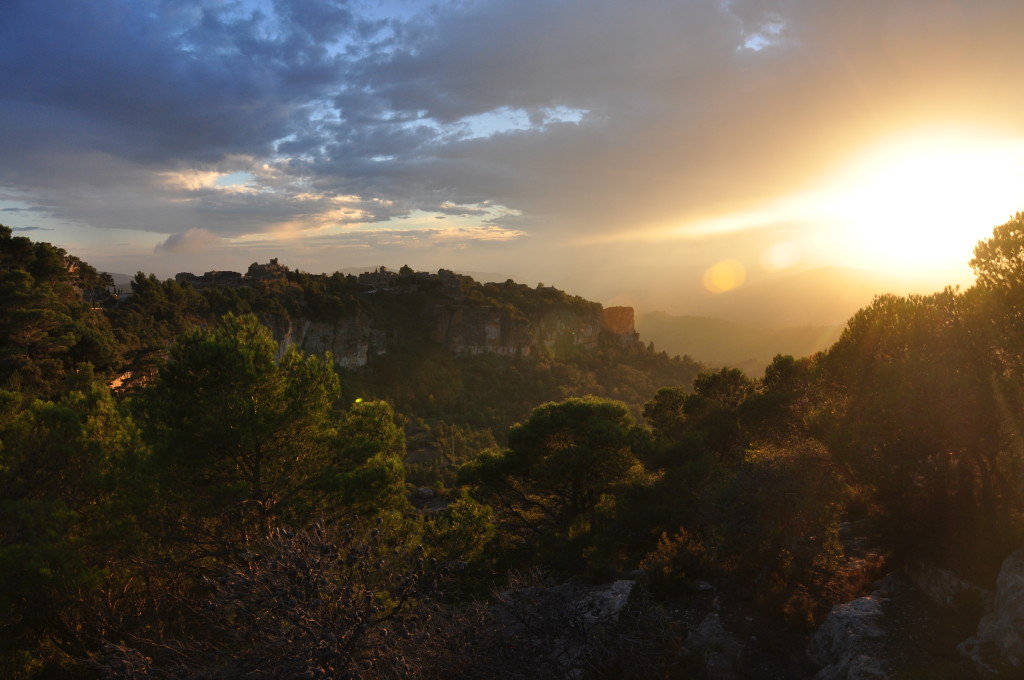
Stunning sunset over Siurana. Photo by Nathan Hall ©
Now, everyone has their preference in styles, and they can all be found in abundance just a short drive from wherever you begin (likely Barcelona). But one place you should definitely not overlook is Siurana. Known as home of cutting edge hard routes like the historic 9a+ La Rambla, first climbed by Alex Huber in 1994. Maybe you’ve seen him describing the route in the Siurana segment of “Stone Master’s IV” along with some inspiring footage of the era’s strong men cruising the classics drenched in glorious sunlight. A young, dread-locked Toni Arbones’ is among them, featured climbing everything (even the dinner table) with youthful, reckless abandon.
Fast forward a couple of decades and Toni is still a fixture. He’s equipped and/or FA’ed countless routes, authored a guide book and settled his family in amongst “Camping Siurana” his full service accommodation in which the slogan boasts “ el rovell de l’ou de las escalada”. It’s Catalan, and translates; the yolk of climbing. As he, and many others who have visited this incredible sport climbing mecca consider it to be the best part of the egg.
Let me try to being to explain why…
Note: There is no epic or elaborated story to follow, just the perspective of a passionate (albeit very mediocre) climber in an inspiring place.
Winding up the road that snakes it’s way through a narrow valley and ever upward, one cannot help but be awestruck. The valley is lined with brilliant orange and yellow cliff bands of improbably vertical limestone sitting in contrast above sandstone bluffs composed of the deepest reds. Fill the remaining space with the lush greens of trees and foliage and the ever-blue Spanish sky and you are witnessing something truly idyllic. Where the road terminates, a picturesque little town with a loaded history sits proud, overlooking the beauty that stretches as far as the eye can see.
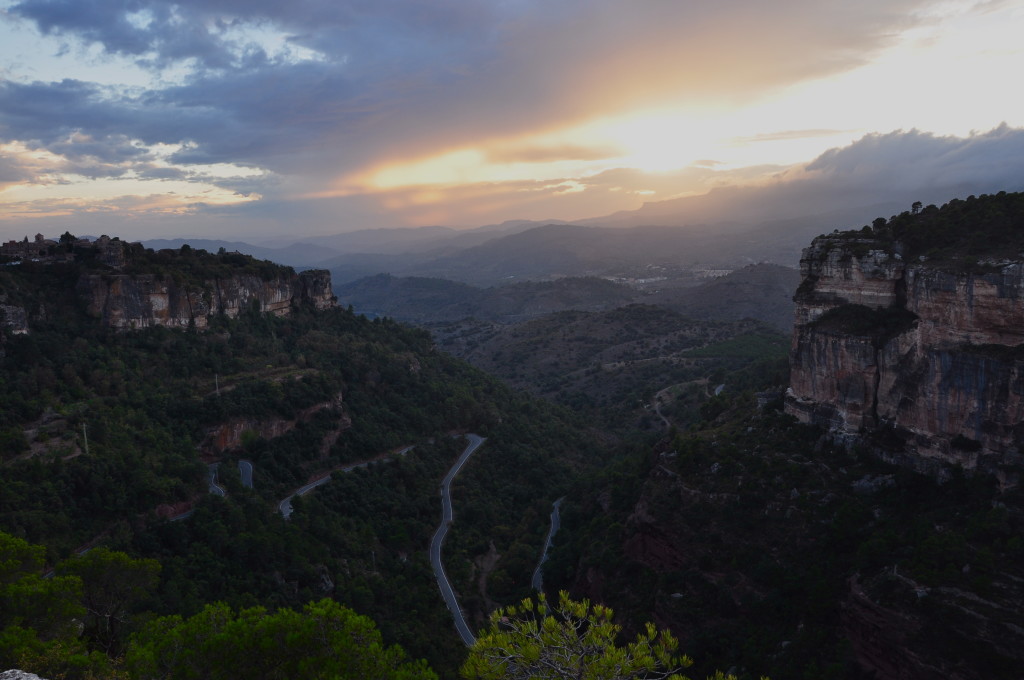
Winding road up the hill. Photo by Nathan Hall ©
It’s the first day at the crag, the middle of September and it’s too warm to climb in the sun. We decide on a shady sector called “L’aparador” (the showcase) and it appears to be just that. There are climbers from all over the globe, a Germans with baguettes strapped to their packs, a group of Polish jumping on any route without hesitation, a spirited Israeli taking whip after whip trying to negotiate a run-out through committing terrain. The angle is just below vertical on grey-brown and fortuitously featured rock. We warm up slow with intentions to adapt body (i.e. fingers) and mind slowly to a style that for me is quite difficult.
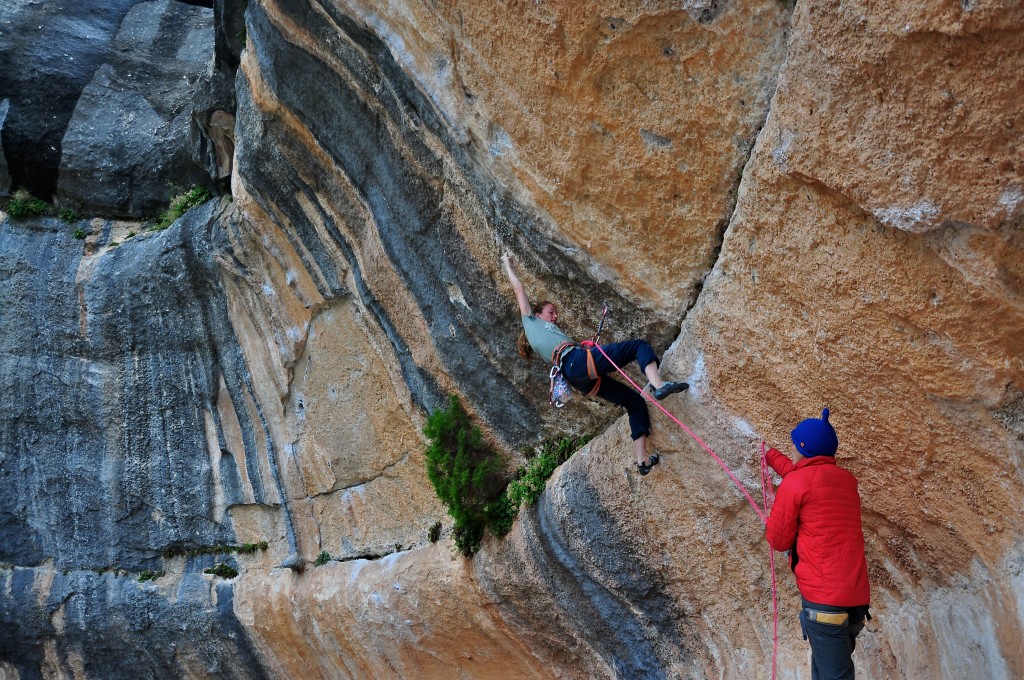
Ekaterina Vlasova trying the moves on the famous “Cara que no Miente” 8a+ L’olla sector. Photo by Pavel Dobrinskiy) ©
At first glance the climbing style appears to be slightly singular. Vertical or gently overhanging face climbing, rewarding finger strength and precision footwork, and certainly those types of routes can be found in spades. But you would be truly missing out if you avoided a visit because you want to mindlessly pull on jugs, as rest assured, there are jugs to be found. L’olla sector, shaped like its namesake, an arching wave and littered with pockets of varying depths. Tufas and crimps as well (really like climbing a 6 or 8 move boulder problem with a long exit). Or the mega long, overhung and standout lines found at El Pati sector where dreamy routes like Dogma, Kale Borroka, La Rambla and Golpe de Estado are found. And although a majority of the routes look absent of substantial holds from below, once on route you find yourself giddy with a sort of gratitude as you maneuver your way up. Things have gotten thin have they? Well, there’s a mono just in reach that is so deep it is classifiable as a jug. Feet disappeared? Look a little bit wider and execute a Ondra-esque drop knee, but minus the scream please. If your not used to this style, it will take some time, and for the first few weeks we settled into the rhythm. For as a climber, finding the rhythm that makes things feel just that little bit easier is what we are after. And with such a vast amount of rock, visiting a new sector almost every day was easy and slowly but surely the subtle features seemed to grow larger and more obvious and we were dancing.
The next few mornings we awoke to cloud cover and cooler temps. We decided to take advantage and explore some of the south facing sectors that would otherwise bake in the sun all day. Sal de la Reina Mora is a large sector in an impressive position overlooking a deep valley where a river slithers through the floor then connects with the reservoir. The rock varies from highly textured grey, to a browny-orange and finally to a bullet-hard and well-featured pale pink. The routes we chose were a journey, up to 35 meters long and although at a moderate difficulty required a patience and resolve if your were hoping for an on-sight. An inside joke was quickly formed, because each route was somehow successively the “best route ever”. And although the sun had long since been burnt off by the formidable Spanish sun, we basked in it’s warmth and climbed and climbed until it lowered behind the escarpments of Monsant.
Another hearty breakfast under an overcast sky, we followed the road down from the campground and wandered through a sheep farm, past an old brick shed and down through a rock corridor to reach Can Marges de Dalt, another scenic and sunny beauty. It’s split in two with a chimney in the middle, aesthetic lines on either side. We warmed up on two deceptive 6c’s with a “trad” feel and generously spaced bolts. I then set my sights on a thin, pure line that shot straight up the right side, a 7c called “L’imbecil “. A fingery, and surprisingly burly start led straight into a long sequence of perfectly situated side-pull sloper edge’s on amazing compact grey rock. It took a good ten minutes to decipher the crux, and at that point it felt difficult and unlikely but I managed to pull it together and fire it second try. Feeling good, I had a look at an enticing 7b+ a German couple had been working called “La Muerte del Sponsor”. I resisted the temptation to accept beta and started up in the fading late afternoon light. A low slab crux traversed to a decent rest where I eyed the next section. A sustained series of shoulder moves on positive, vertical rails gave way to another rest in a large pocket before the final bulge. I took a breath and gunned for it, abandoning technique and just throwing for what I believed to be the holds I needed. Somehow it clicked and as any classic route should, it contained a jug of victorious status. The on-sight juices were beginning to flow. I was proud of the day’s climbing and really beginning to embrace the increasingly interesting challenges Siurana’s walls offered.
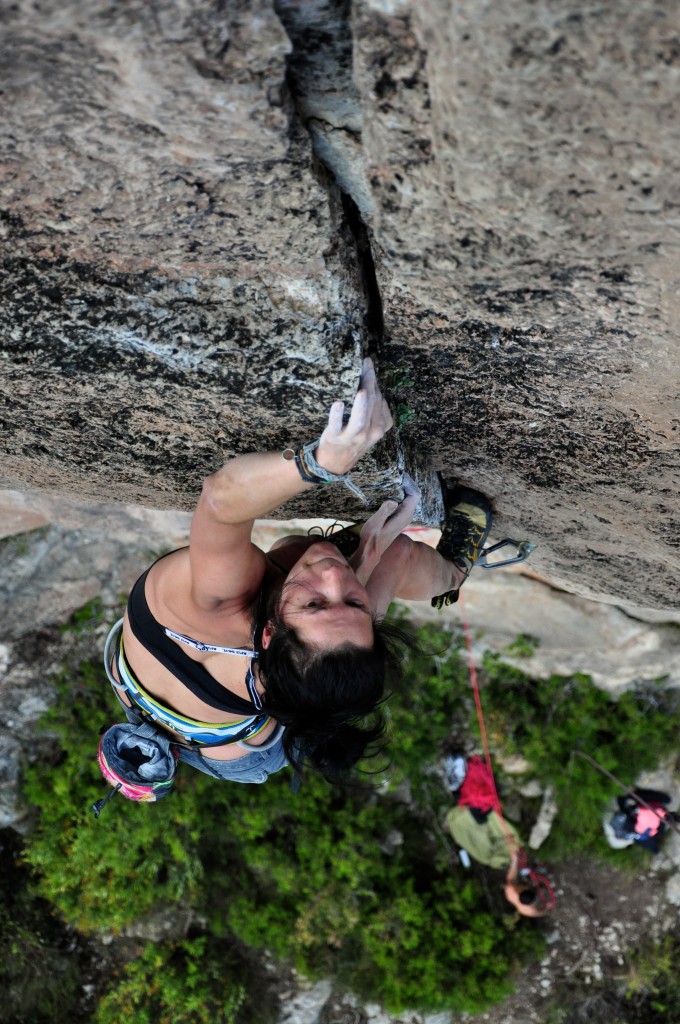
Tatiana Shilova on the amazing 7b, “La Torre del Diable”. Photo by Nathan Hall ©
Mainly developed in the 90’s, Siurana retains an “old-school” vibe, no holiday grade’s here. In fact, if word was getting around about a certain route gaining a reputation as an easy tick, you will find it downgraded appropriately in the next guide book edition. It’s not uncommon to turn up, locate what should be a suitable warm up and start up, only to find yourself thwarted and hanging at the second bolt, confused and frustrated. Your also going to have to make some moves between bolts, and sometimes even to reach the first bolt, so be prepared for that. One day, a Pacific Northwest couple turned up at L’aparador sector. They were perusing the guide book for an inordinate amount of time, so I offered my help as I’d been there for a few weeks and felt like I had a pretty good grip on the place. The woman said they climbed frequently at Smith Rock and she could lead 7a+ (12a) there but she felt like 6c was her limit in her comfort zone in Siurana. And at last I realized a slight flaw in the mecca. The more moderate climbers, say, below 7a are quite limited. That’s not to say there isn’t a number of moderate routes worthy of climbing, but they tend to be the fringe routes on the less appealing rock (i.e. grey, dagger rock) and yes, there will be run-out’s, so it’s best to keep this in mind.
Between climbs I would gaze across, transfixed by the magnificent wall that sat high above the opposite side of the valley, a massive and unbroken cliff-band that just beckoned. We located it in the guidebook realizing it was Arboli, a neighboring area just a 20 minute drive from Siurana and made it a point to make sure we got there. When we finally did, we began at the section invisible from Siurana called “El Falco” which I still think is possibly the best “moderate” crag I have visited. And in the two days we climbed there we worked our way right to left on one 5 star classic after another. The perfectly featured orange stone provided just enough holds, and in such a surreal variety that each 35-40 meter route felt like a whole days worth of climbing value. Do not miss it.
Now not everything was ideal, and it was good old Mother Nature that provided us with plenty of opportunity for lessons in patience. There was plenty of rain. It seemed about every 3 or 4 days a deluge would arrive and soak everything. Powerful thunderstorms were becoming commonplace in the evening’s and overnight, illuminating the sky and shaking the ground underneath us. It did mean forced rest at times, although the rock could dry in a matter of hours despite being completely soaked the night before. Being that the majority of the walls face south and that the region is favored with a good helping of sun (the rain we experienced was pretty uncommon) we realized that we had come a bit early in the season. It gave me personally, the opportunity to maintain a slow pace, preferring to work on technique and on-sight ability given the conditions were sub-optimal. There were however, plenty of shady options, especially if you were willing to rise early or climb late. One stretch of cliff which avoids any sun until around 4pm contains some of the best climbing we encountered containing the sectors “L’aparador”, “Can Toni Gros” and … The standout’s for me were a 30 meter 7a+ called Bindelef that follows a faint crack system which when open creates one-way pinches that force you sideways onto sloping rails. Skateboy is a nails hard 7c up a blank looking orange streak that does not contain one easy move, a real test of overall ability and mental fortitude.
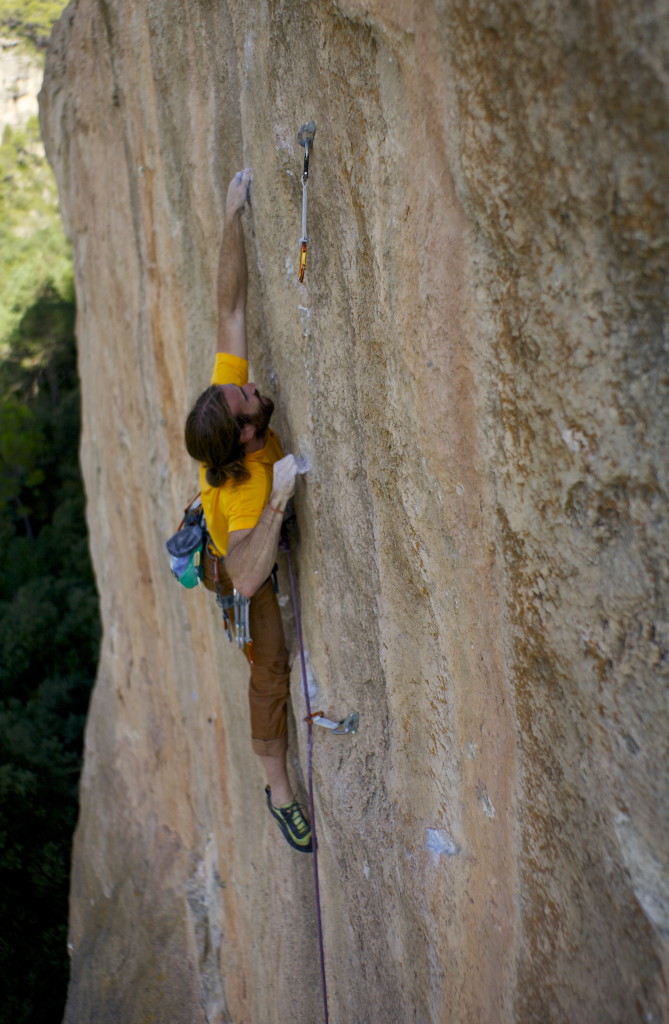
The author on the crimpy crux of “Skateboy” 7c, Can Melafots sector. Photo by Pavel Dobrinskiy ©
Before I knew it we were 6 weeks deep in Siurana, completely absorbed. At this point I could feel the subtle but marked improvement in my climbing. The fingers swelled to crimp hard size, the feet felt swift and sure and motivation was easy to come by. I began to feel at ease and in balance on thin terrain, even completely avoiding the onset of a pump. It was a feeling I’d never experienced before as I would become anxious and slightly panicked at the sight of crimps and small edges. I’d tapped into the rhythm of the rock and it was addicting, I wanted more. Every so often a fleeting thought of “maybe we should try to climb somewhere else?” came to mind, but we would push it aside, for we had not even begun to scratch the surface. Something about the place just holds you.
Isn’t it ironic then, that at one point in it’s illustrious history Siurana was converted into a prison. A clever location, as there is only one way in and one way out, the other 3 sides, sheer cliffs dropping down to the valley floor. For now, climbers will continue to move up those walls instead, willing prisoners in surely one of the most spectacular destinations to practice our craft.
Beta:
Renting a Car
A rental car, although not completely essential once in Siurana is very handy, and can be quite inexpensive. We booked online (autoeurope.com) for about 5 Euros a day! The key was changing the language to Russian, which instantly cut the price in 1/3. You don’t really need if your staying at the campground, all the crags are within walking distance. However, if you plan to climb in Margalef or Monsant the odd day or hit the beach on rest days the freedom of vehicular transport is invaluable.
Gear and Stuff
The town of Cornudella de Monsant has a well stocked climbing shop that also doubles as a pub/eatery in high season. They also do fantastic resole work at a reasonable price. Their gear and clothing prices however are priced at a premium.
Find the butcher shop which is just down the alley from the church on the main street going through Cornudella They are very proud of their hand made sausages, we bought some lengths of the black pepper variety and understood fully the pride involved. Camping Siurana has a wood fire grill available for all to use, you know what to do.
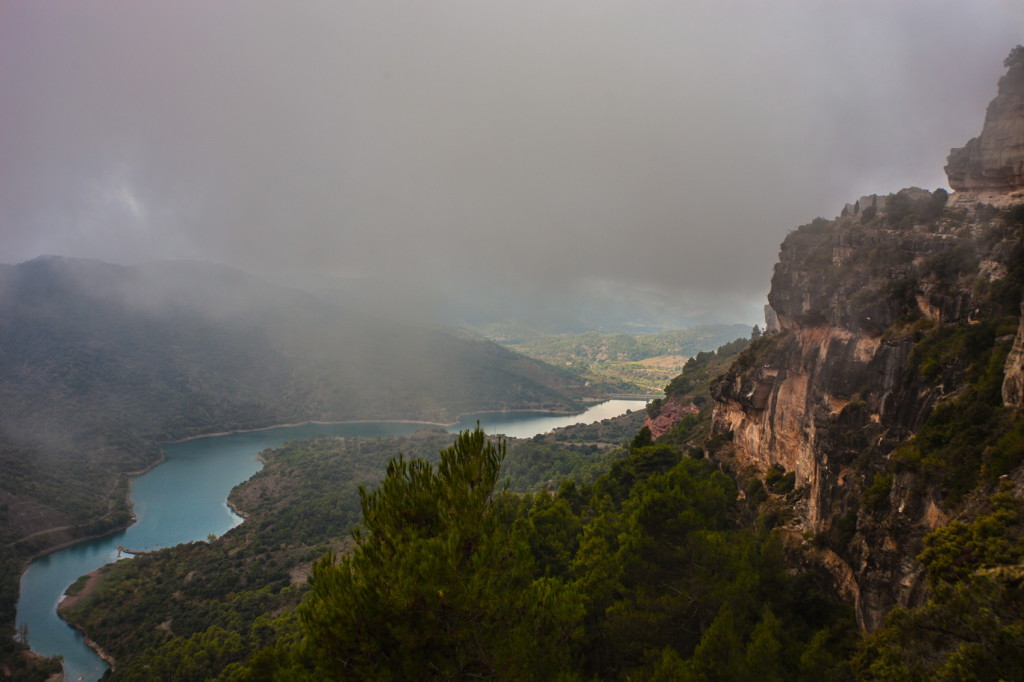
Sunrise over the valley. Photo by Nathan Hall ©
Nathan Hall works and lives in Squamish, BC.
